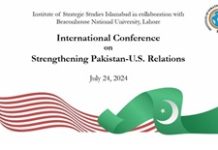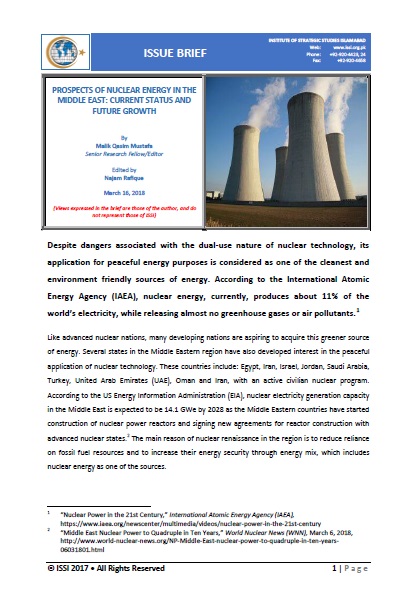Despite dangers associated with the dual-use nature of nuclear technology, its application for peaceful energy purposes is considered as one of the cleanest and environment friendly sources of energy. According to the International Atomic Energy Agency (IAEA), nuclear energy, currently, produces about 11% of the world’s electricity, while releasing almost no greenhouse gases or air pollutants.[1]
Like advanced nuclear nations, many developing nations are aspiring to acquire this greener source of energy. Several states in the Middle Eastern region have also developed interest in the peaceful application of nuclear technology. These countries include: Egypt, Iran, Israel, Jordan, Saudi Arabia, Turkey, United Arab Emirates (UAE), Oman and Iran, with an active civilian nuclear program. According to the US Energy Information Administration (EIA), nuclear electricity generation capacity in the Middle East is expected to be 14.1 GWe by 2028 as the Middle Eastern countries have started construction of nuclear power reactors and signing new agreements for reactor construction with advanced nuclear states.[2] The main reason of nuclear renaissance in the region is to reduce reliance on fossil fuel resources and to increase their energy security through energy mix, which includes nuclear energy as one of the sources.
















